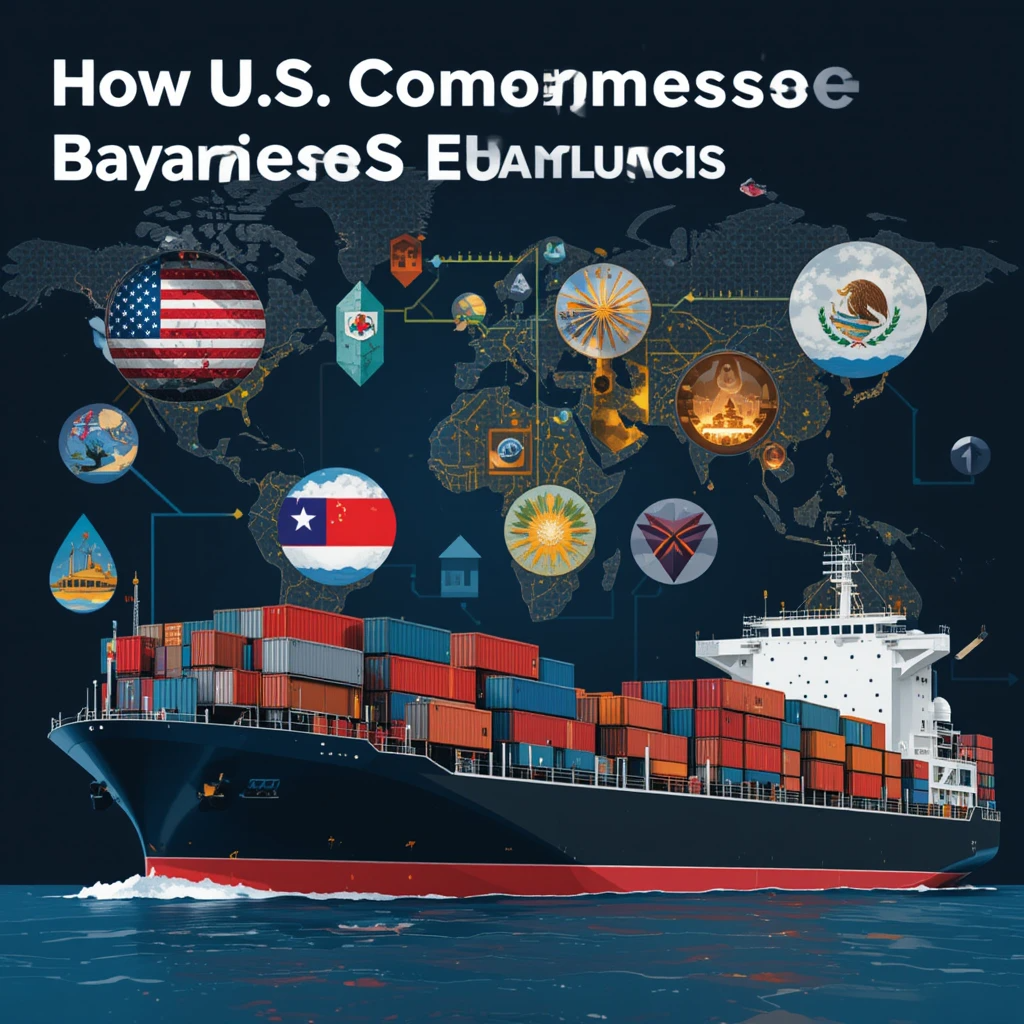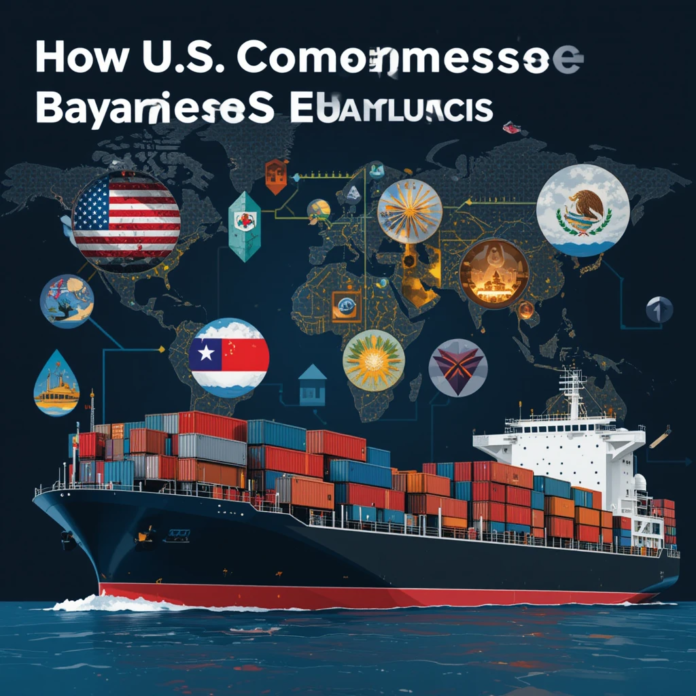
In a progressively changing trade scenario, American corporations are following new ways to source critical raw materials even if China applies restraints on exports of certain key minerals. Over recent months, there has also been a specific trend that has emerged in global supply chains when American importers are diverting imports of antimony, gallium, and germanium through third countries such as Mexico and Thailand to bypass Beijing’s restrictions.
This maneuvering follows China’s imposition of tightened export controls, which were implemented in December 2023. These restrictions were widely interpreted to represent a tit-for-tat move following restrictions by Washington on China’s semiconductor technology exports. Such rare materials are employed in high-tech production, including electronics, military systems, and renewable energy technologies.
In Focus: Why These Minerals Matter
The elements at issue here, antimony, gallium, and germanium, are key constituents of various strategic industries:
It’s employed in flame retardants, semiconductors, and in batteries.
Gallium also finds application while manufacturing high-speed computer chips and LEDs.
Germanium is most prominent in fiber optics, infrared optics, and solar panels.
China controls most of global supplies of all of these minerals. China provides more than 70% of global antimony production, and virtually all of the gallium and germanium processing, according to United States Geological Survey calculations. Accordingly, a disruption of Chinese exports will have a highly significant impact on global supplies.
Rerouted Supplies: Mexico and Thailand Bridge the Gap
After Beijing tightened export permits for these minerals, American importers looked elsewhere. Between December 2023 and April 2024, almost 3,834 metric tons of antimony oxide were imported from Mexico and Thailand, according to US Customs records—roughly what had been imported from there in the preceding three years all combined.
Such a steep spike caught trade observers off guard, all the more so because neither Mexico nor Thailand has sizeable domestic stocks or mines for both minerals. Both countries have only one antimony processing plant each, Mexico’s recently re-opened this April, which inhibits them, in all probability, from attaining such volumes independently.
Instead, there are indications that businesses that are Chinese-owned or affiliated are exporting the minerals to those countries, where they are re-labeled or processed, and then exported to America. This helps importers technically comply with American trade policy yet still obtain Chinese material.
Role of Overseas-Owned Chinese Smelters
One key example of this circumvention route is that of Thai Unipet Industries, a smelter in Thailand that belongs to China’s Youngsun Chemicals. Between December 2023 and May 2024, Thai Unipet shipped about 3,366 metric tons of antimony to the United States—27 times that which it exported during that time in 2023.
Whilst the cargos are documented in customs ledgers, it’s often difficult to ascertain their original point of origin. Analysts also notice that more and more of these businesses are turning to transshipment techniques—shipping them to a foreign country for minimal processing or rebranding before they are exported to their intended location.
“You’re seeing a specific trend—products that once immediately originated in China are now originating through intermediaries,” said Ram Ben Tzion, a logistics and supply chain professional at Publican, which monitors international trade flows. “They’re innovative, they’re efficient, but they have tremendous transparency and compliance problems associated with them.”
Grey Areas in Law and Regulation
Such exports are legally in a gray area. It remains permitted for Chinese enterprises to ship minerals like germanium and gallium abroad, but they will need to obtain a special permit and file statements about end-use destinations. On paper, this will keep shipments down to strategic rivals like United States countries, but once such materials are shipped out of China to a third country, they can readily re-exported and not draw much attention, all the more so if re-packaged or commingled with other products.
There is no American ban on importing minerals of Chinese source per se, but only on dealing directly with some flagged suppliers or sanctioned businesses. As such, most American companies continue to legally import China-sourced materials, if indirectly, via other routes.
Higher Costs, Ongoing Demand
There are expenses involved in such workarounds. Rerouting supplies implies added logistical headaches, extended delivery, and expense. Industry insiders quote 20–35% elevated costs on selected gallium and germanium imports due to added handling and ambiguity. However, American businesses view the extra cost worthwhile in order to maintain access to necessary raw supplies. “We import gallium via other Asian countries now,” explained Levi Parker, an importer based in Texas. “We strive to keep shipments below 250 kg just to keep under the radar. We can’t afford to lose momentum.”
China’s Crackdown on Smuggling and Loopholes
Beijing is aware of the growing use of third-party transshipment and has taken steps to crack down on the practice. In May 2024, China’s Ministry of Commerce and General Administration of Customs jointly launched a campaign against unauthorized exports of sensitive minerals.
Violators face harsh penalties: fines, export license revocations, and even prison sentences of up to five years for illegal trading practices. Still, experts suggest enforcement is inconsistent, especially in regions where local officials turn a blind eye to violations in exchange for economic benefits.
The Bigger Picture: A Weaponized Supply Chain
The rerouting of mineral trade is a small part of a broader global realignment. As the U.S. and its allies seek to “de-risk” supply chains and reduce dependence on China, Beijing is also recalibrating its trade relationships in response to mounting geopolitical tensions.
At stake is not just who supplies the raw materials—but who controls the technologies and industries that rely on them. In this contest, supply chain flexibility has become a form of strategic resilience.
Despite China’s efforts to assert control, current import figures show that U.S. access to critical minerals has not diminished—it has simply become more expensive and more complex. According to analysts, the global supply chain has adapted faster than expected, showing how commercial demand often finds a way, even in the face of political friction.
Conclusion
As long as critical materials remain essential to everything from national defense to smartphones, the pressure to maintain steady access will drive innovation, workarounds, and even regulatory gray-zone strategies. While these trends might provide short-term solutions, the long-term picture remains uncertain. Both the U.S. and China are now navigating a new era of strategic resource competition, where minerals are more than just commodities—they’re leverage in a global power play.


